P3 art & environment, Tokyo Metropolitan Museum of Contemporary Art, Nadiff and the streets of Tokyo hosted a public studio, installation and a wide range of public events including a bus tour.
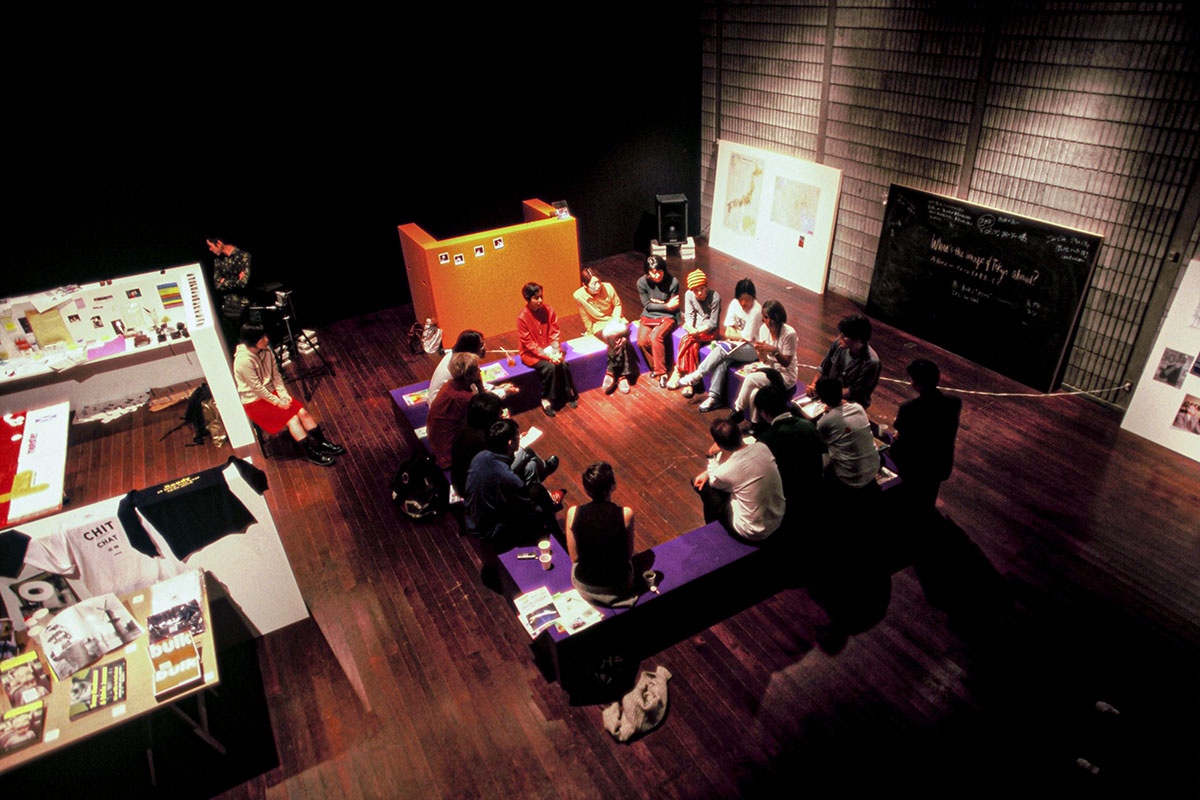
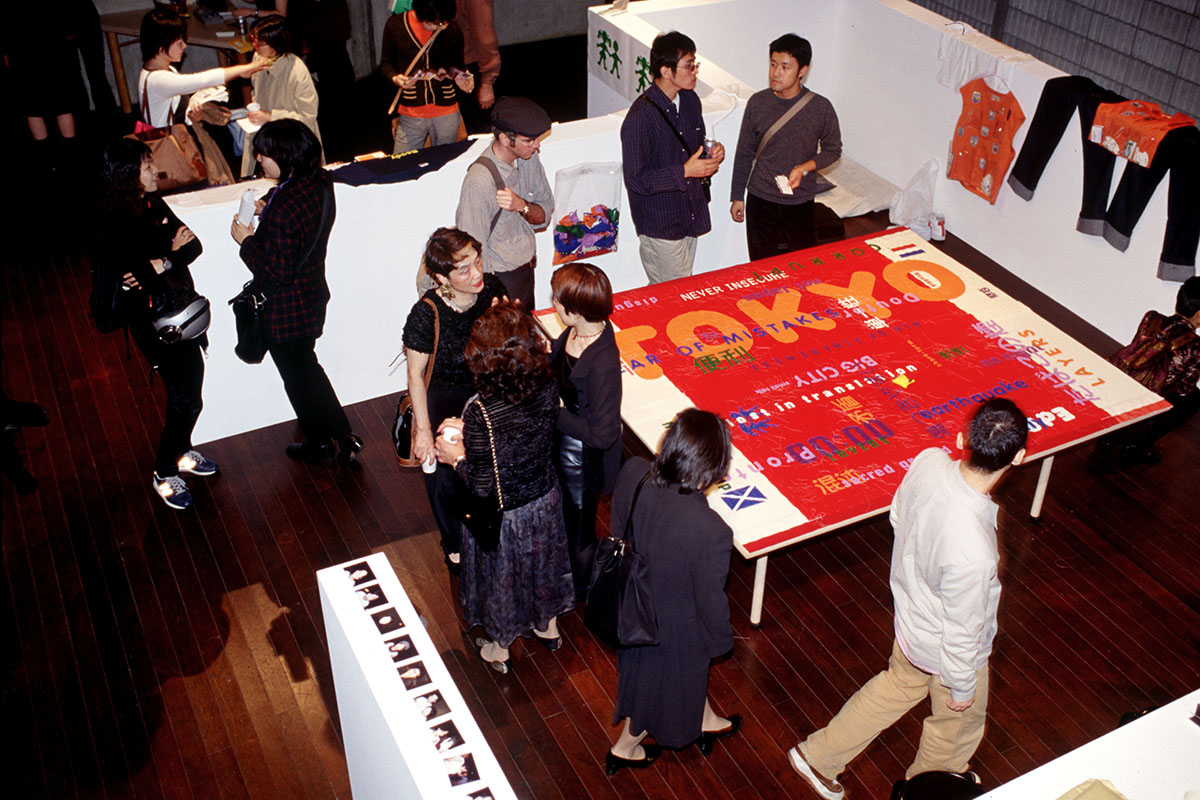
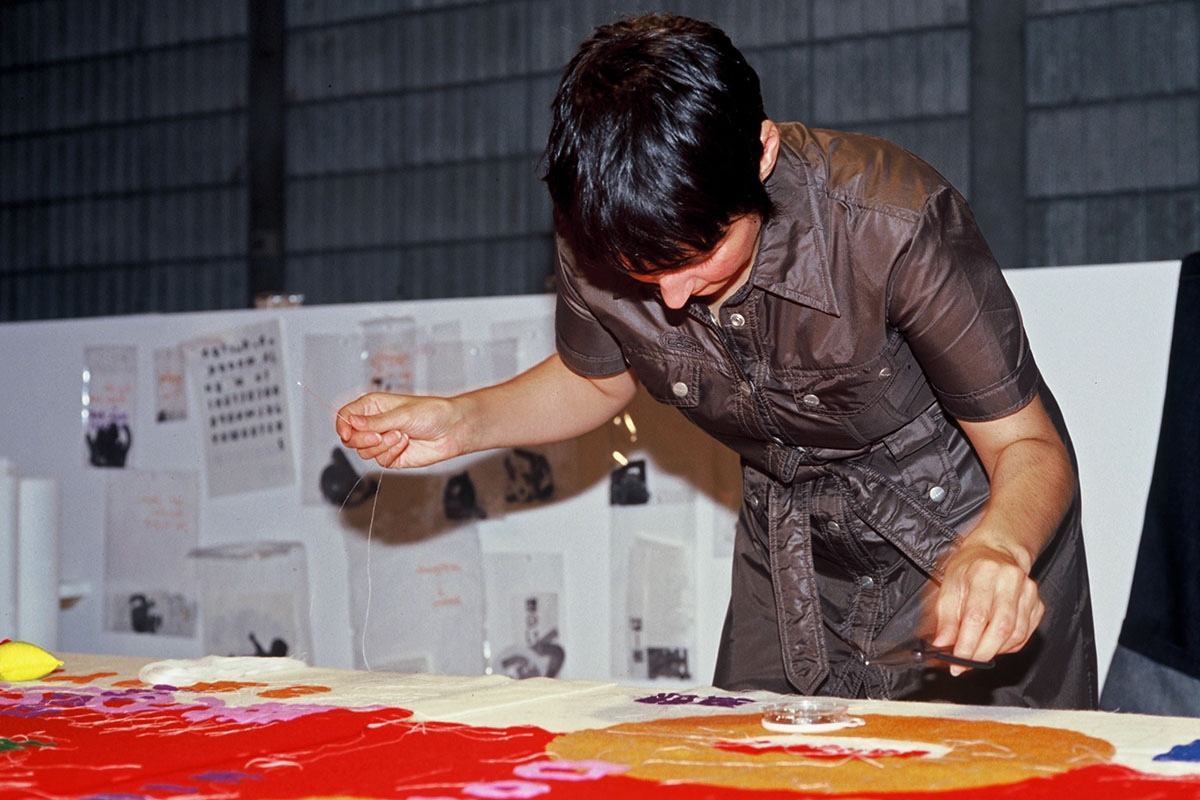
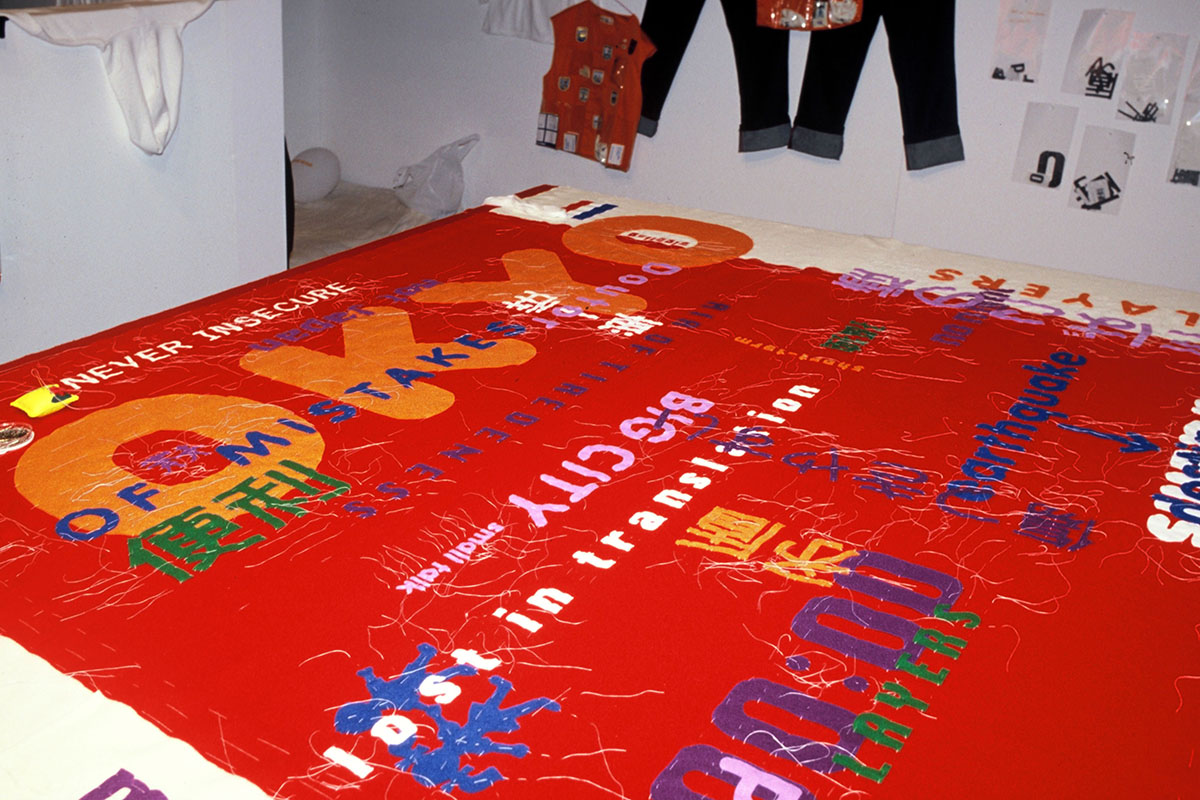
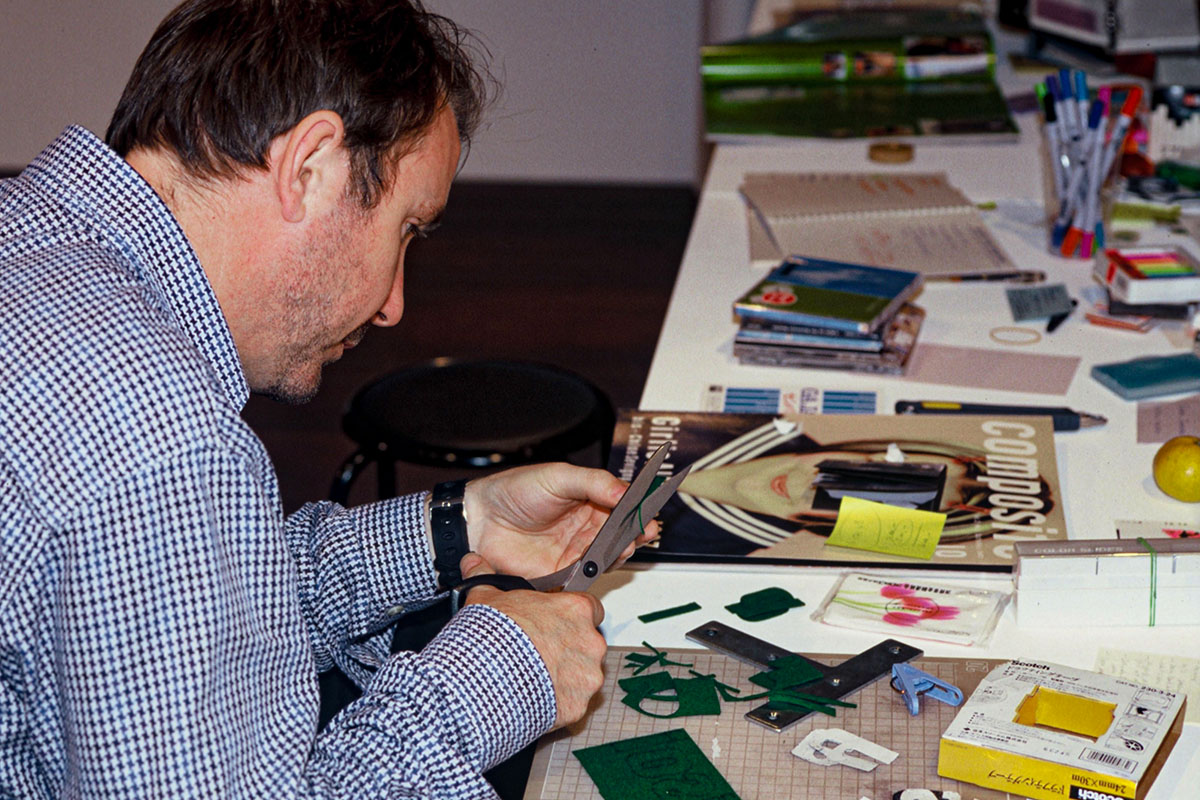
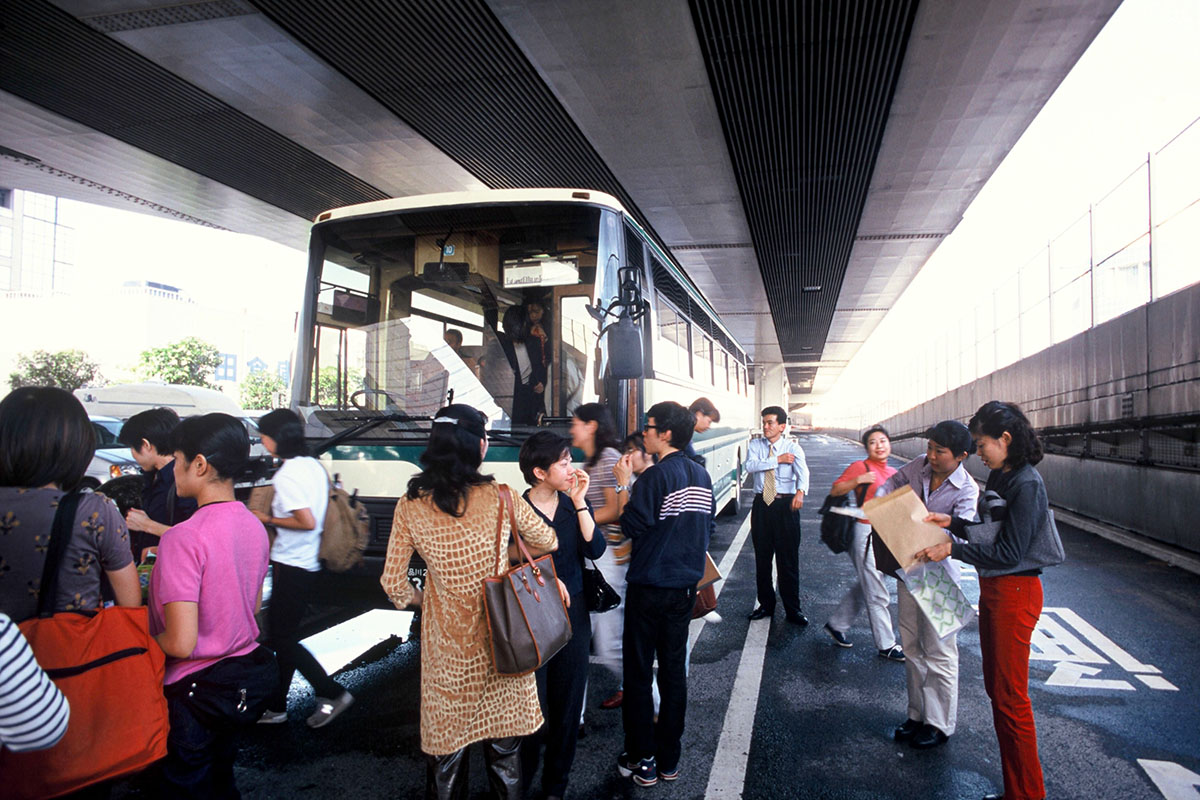
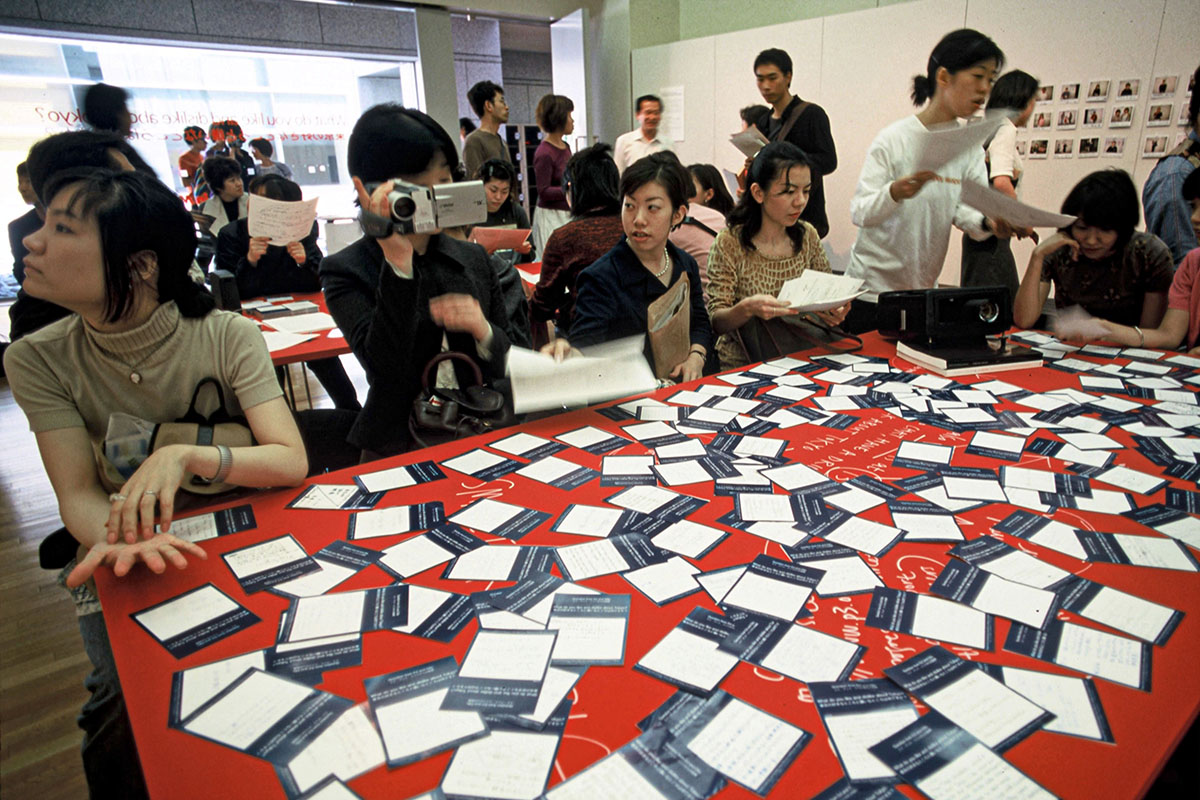
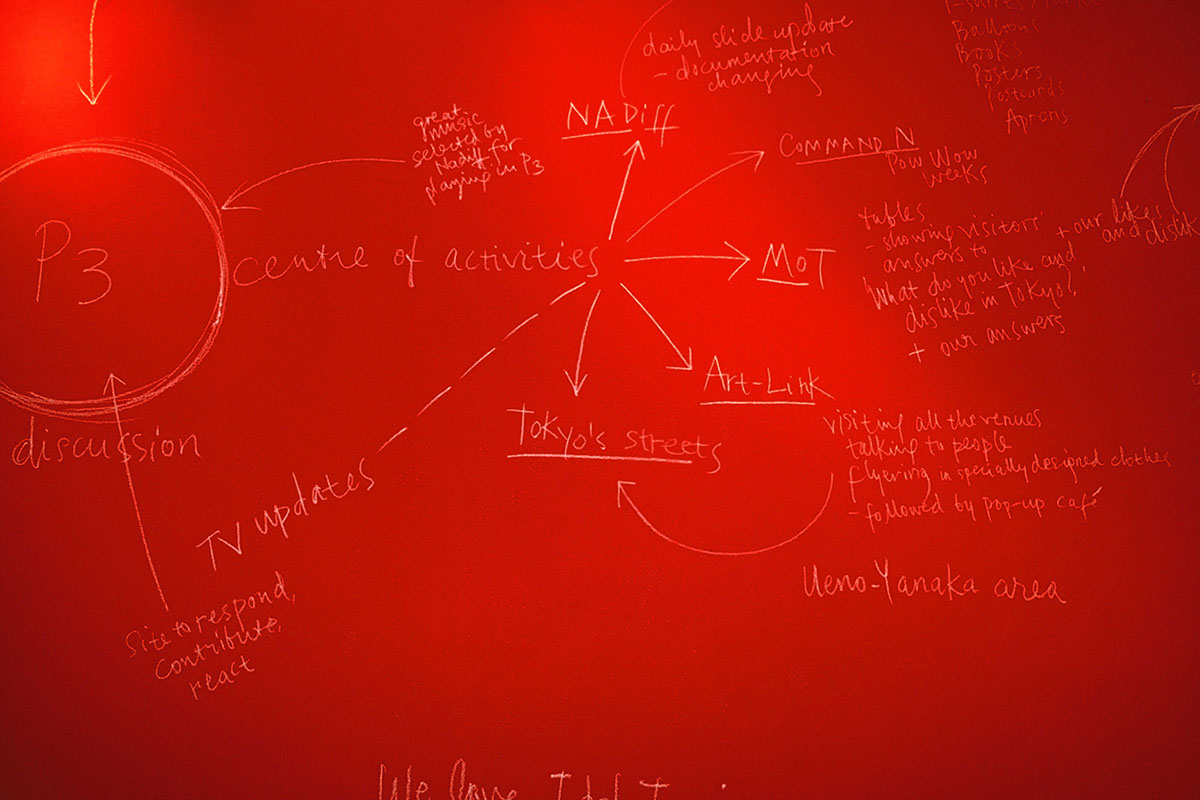
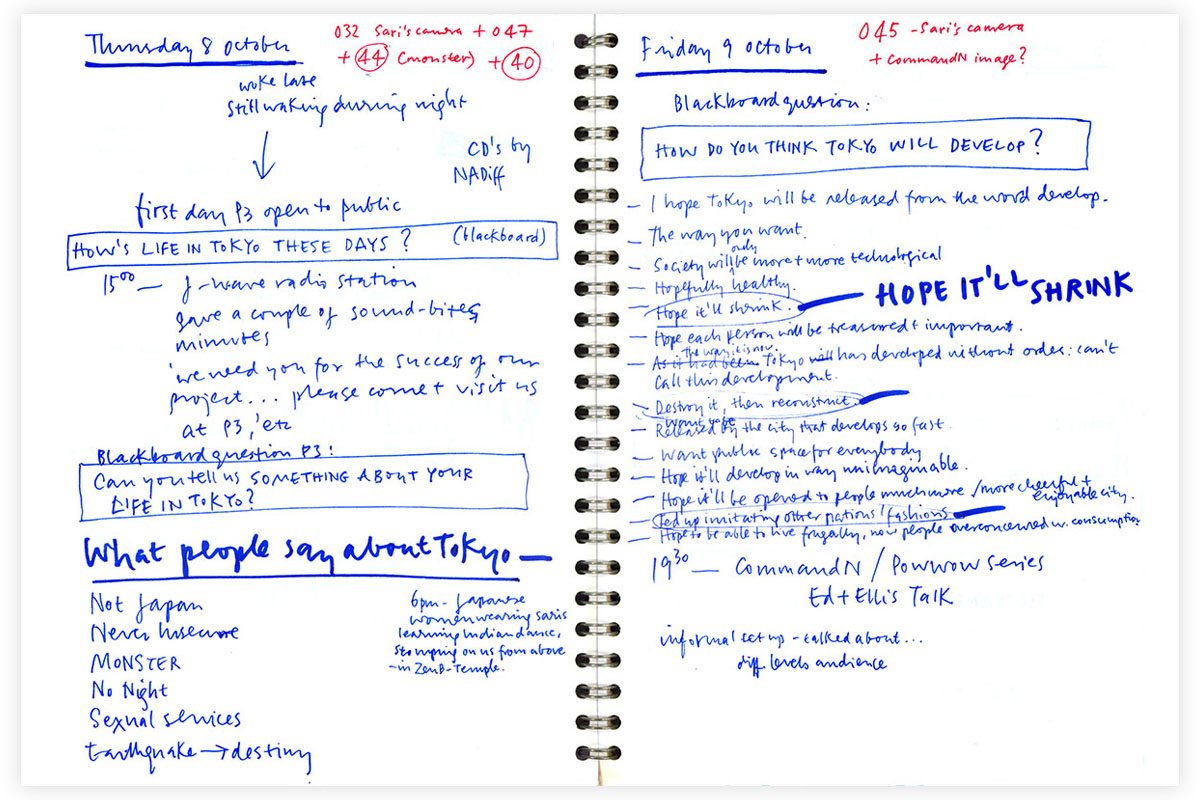
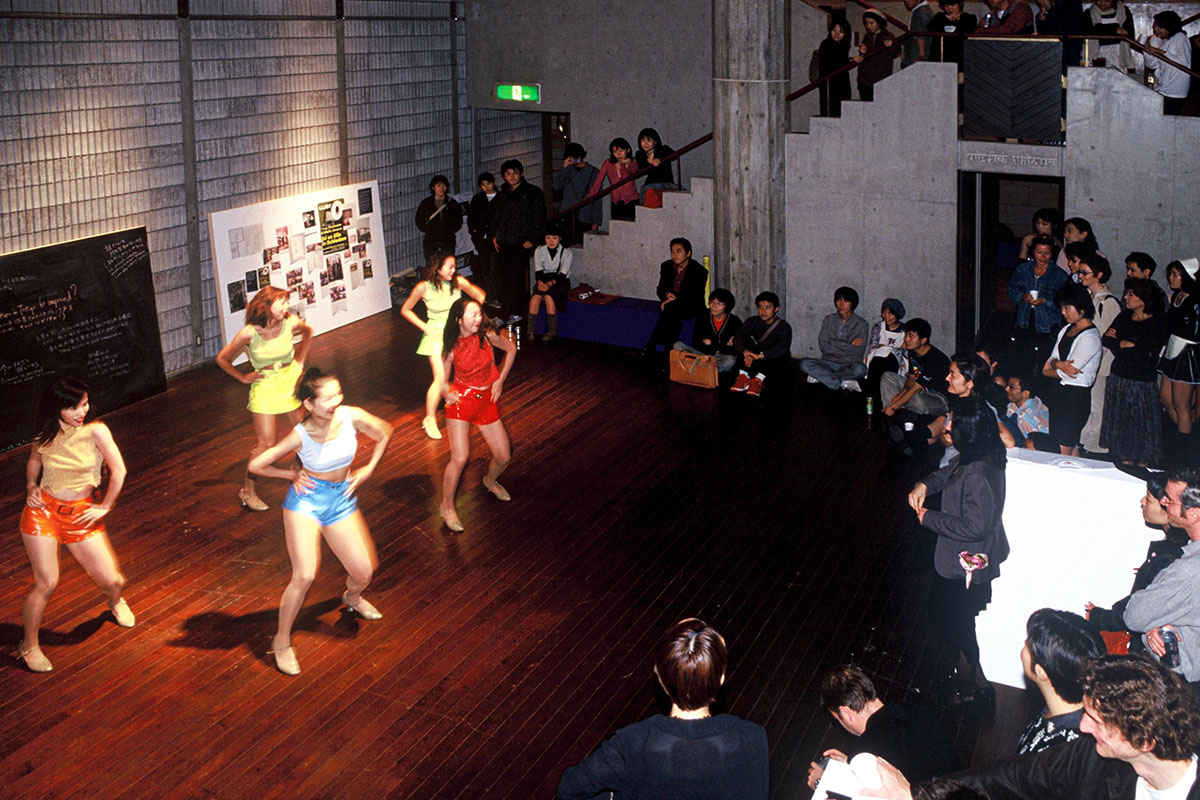
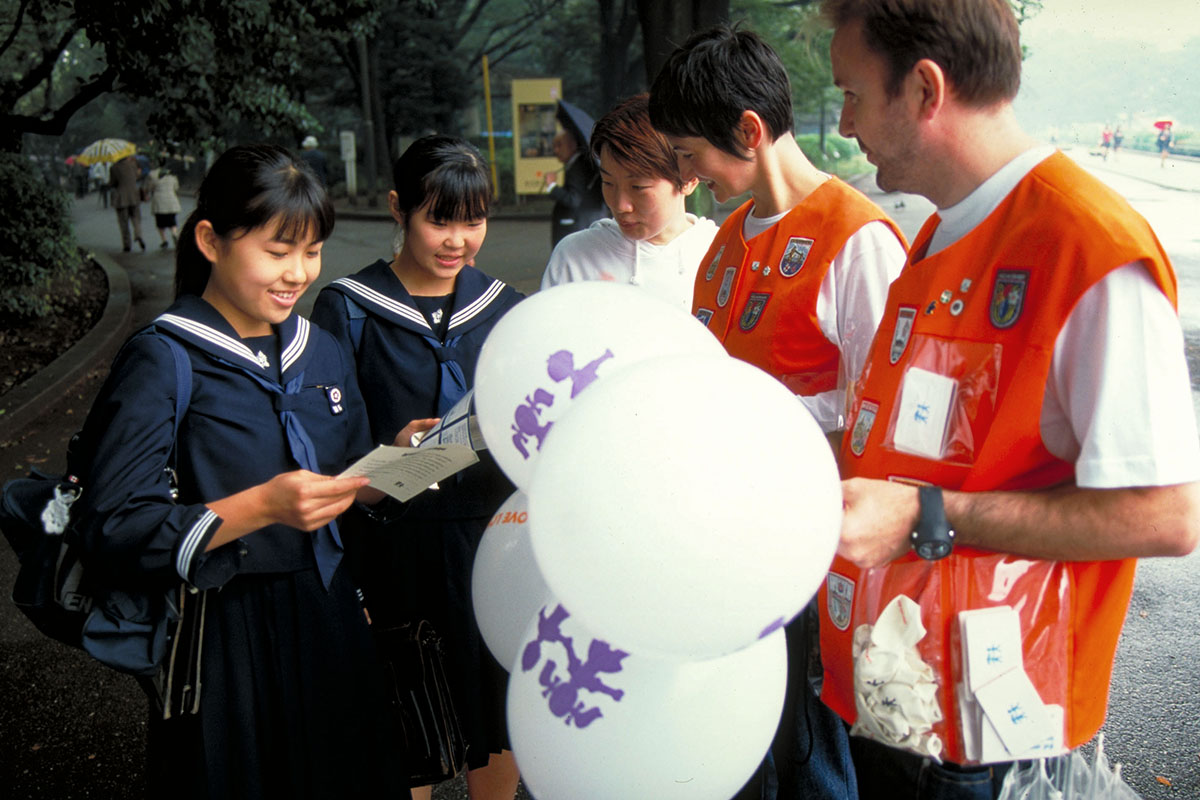
For this 1998 project Tracy and Edwin transformed P3 art & environment’s Tokyo exhibition space into a public studio where they worked on a text blanket and hosted a wide range of public events.
The text blanket was an accumulation of verbal and written contributions gathered through conversation, group sessions and comments made on response cards by visitors. On completion and after machining in Scotland, the blanket travelled between the homes of the people whose texts were incorporated into it.
The café that was a curated element of the temporary exhibition space functioned as a creative zone for invited DJ’s each of whom was also involved in a specific area of visual practice.
Two satellite venues, at Tokyo Metropolitan Museum of Contemporary Art and Nadiff Gallery hosted elements of the project including a wall-drawing installation, public lectures and an architect-led bus tour of Tokyo’s motorway network.
In the research phase of the project, Tracy & Edwin took part in architecture, art and design workshops in Tokyo with the aim of meeting groups who were analysing contemporary issues related to living in Tokyo. Through this interaction they developed the project that would focus on issues within a purpose-built environment that used P3 art & environment’s gallery space as the centre, with satellite venues.
A range of inter-related events responded to expressions of alienation amongst particularly the 18-35 year olds from their peer group and from their elders. People wanted to engage with the city’s evolution in order to understand individual experiences such as belonging, attachment and memory.
In the developmental stages of the project, P3 art & environment transformed its way of working by integrating themselves, the audience, public space, other venues and the artists. They brought together organisations that would not normally have worked together and dissolved the usual distinctions between exhibition, public art and community art practice.
A lecture programme highlighted issues such as architecture’s effect on collective memory and the (im)probability of integration into Japanese society by other Asian cultures.
The project was made possible by the generous engagement of the 12 volunteers recruited by P3 art & environment. Acting as hosts, interpreters and translators, they were present in the gallery, accompanied Tracy & Edwin onto the streets as a promotional team while they distributed printed material that mimicked Tokyo street advertising strategies, and ran the project website.
As in many of Tracy & Edwin’s projects, t-shirts, flyers, fold-outs, stickers and balloons were given away in exchange for conversation and as promotional material; these were designed in collaboration with Dutch design bureau Stout/Kramer.
The experience of devising and working on the project was exceptional. The openness and the desire to engage that the artists encountered in people was overwhelming. The lack of cynicism that distinguishes the Japanese art audience from a European audience reinforced art’s ability to have an immediate and direct impact, and that it can in fact affect people’s lives in a lasting way.